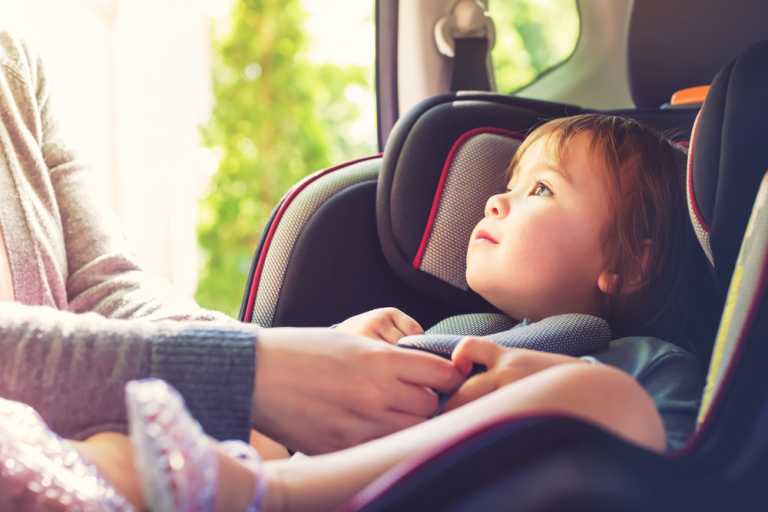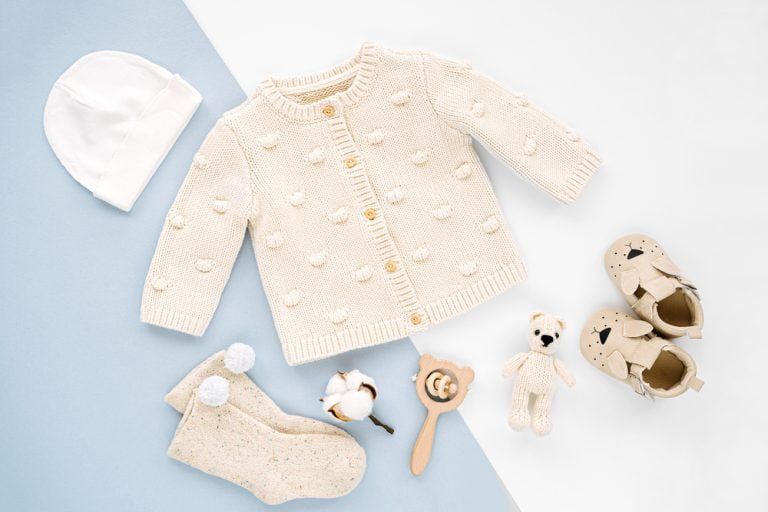We’ve all heard the advice, “Put your baby on their back to sleep.” But what should you do if your newborn keeps rolling onto their side? Do you need to watch them all night?
Happily, no, you need sleep too! While rolling does come with risks, you can prevent or minimize them with some simple steps. Here’s everything you need to know to keep your side-sleeping baby safe and well-rested.
Why Do Newborns Roll Onto Their Side?
Rolling over is a milestone most babies reach around 4 months. So, it can be a surprise to peek into your newborn’s bassinet and find them on their side. However, this is not an intentional roll but a reflex known as the “Newborn Curl.”
Essentially, your little one is so used to being curled up in the fetal position in the womb that they keep it up after birth. It’s more common in full-term babies who spent the last few weeks without much room. Preemies almost never curl up on their side.
Is It Safe for Newborns to Sleep on Their Side?
The safest way for your baby to sleep is on their back. So, having your newborn nap on their side is not ideal, and you should gently roll them back when you spot it.
However, it should not become a source of anxiety. While the newborn curl is relatively common, they rarely can make it onto their tummy. This is where the real danger lies.
So, if your little one is a side sleeper, don’t panic. They’ll grow out of it quickly, and there are many ways to make it safer.
How to Make Side Sleeping Safer
It’s easy to say, “Just roll them back,” but what if your baby curls up while you’re sleeping? No one would suggest waking up to check on them or watching them all night. Instead, follow these simple tips to make sure they’re safe.
Wait for Deep Sleep
Your baby will enter the deep sleep phase around 20 minutes after drifting off. During deep sleep, they won’t wriggle as much and will be less likely to roll.
So, hold your sleeping tot for 20 minutes before transferring them to their bassinet. Or, watch them for the first 20 minutes before getting some rest for yourself.
Remove Toys and Crib Bumpers
Never place toys or crib bumpers in your baby’s bed, especially if they’re a side sleeper. The danger is that they may roll their face into them and suffocate.
If you are worried about your little one bumping into hard bars, switch to a bassinet with mesh sides. These are soft and allow safe airflow.
Upgrade from a Bassinet to a Crib
Cribs are wider than bassinets, so if your newborn does roll, they’ll be less likely to squash up against the edge.
Stop Co-sleeping
As rolling newborns are at a higher risk of moving into something that may suffocate, you should avoid co-sleeping or dropping one side of the bassinet.
Don’t Use a Sleep Positioner or Attempt to Prop Your Baby
You may think the answer is a sleep positioner or propping up the mattress with towels. Unfortunately, this is extremely dangerous, especially if your baby is rolling.
Sleep positioners cause 1 infant death each year. This happens when babies push their faces into it or become wedged between the positioner and crib. So, they should never be used without supervision.
Choose a Firm Mattress
Your baby’s mattress should be firm. This means they shouldn’t sink into it or leave an impression after lying down.
This is important because, if they do roll, a firm mattress is less likely to block their airway. A soft mattress is dangerous, as their face can sink into it.
The Swaddling Dilemma
Swaddles are mentioned as both a source of risk and a solution for newborn rollers.
If you find that swaddling your little one keeps them on their back, great! You can keep using it until your baby is eight weeks old or is intentionally rolling.
However, if your baby can roll while swaddled, remove it immediately. It’s much easier for a swaddled side sleeper to end up on their tummy and much harder for them to roll back.
Instead, try a sleep sack. These are safe for rolling babies of all ages and ensure your little one can’t kick off their blanket and wake with cold toes.
You may even find that the swaddle was actually the cause of the issue. Some babies don’t like being restricted and will wriggle to get free, triggering accidental rolls.
What Are the Risks of Side Sleeping?
So, we know that side sleeping can be dangerous. But what exactly are the risks?
SIDS
The most serious risk is Sudden Infant Death Syndrome or SIDS. This is the sudden and unexplained death of a baby under 1-year-old, and tragically, unsafe sleeping spaces are a significant contributor.
While most SIDS prevention campaigns highlight the dangers of tummy sleeping, side sleeping carries just as much risk.
Plagiocephaly
Babies’ skulls are soft and moldable even under the pressure of simply lying down. Spending a lot of time on their backs or sides can result in flattening that part of their head.
Fortunately, this won’t do any permanent damage, but a doctor may prescribe a helmet in extreme cases.
Torticollis
Babies who always sleep on one side may develop torticollis. This is where the muscles tighten on one half of the neck. It can cause them to tilt their heads or make it difficult to look in one direction.
Again, this isn’t dangerous and is easily resolved by fixing positioning issues.
Preventing Plagiocephaly and Torticollis
To prevent these conditions, you need to continuously switch the side they lie on. Here’s how:
- Alternate which end of the crib they sleep at.
- Use a mobile to encourage them to look up.
- Hang high-contrast pictures outside the crib in the direction you want them to turn their head.
- Gently adjust their head position once they’re sound asleep.
- Change the direction they lie during diaper changes.
- Encourage them to look the other way during play and cuddles.
Final Thoughts
While it can be anxiety-inducing to have a baby who simply won’t follow safe sleep guidelines, it’s important to remember that side sleeping is just one risk factor for a very rare condition. If you follow all the other safe sleeping advice, your little one’s bedtime habits shouldn’t be a problem.
If it’s causing you a lot of worries, consider a baby monitor that detects their breathing or oxygen levels.
Also, spend around 30 minutes daily practicing tummy time with your little one. This will develop their core strength and get them intentionally rolling sooner. As soon as you know they can move from their tummy to their back, you’ll both sleep much sounder.




